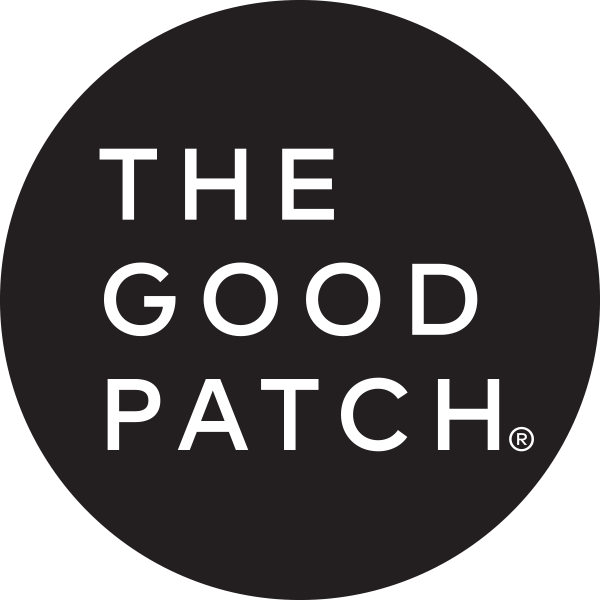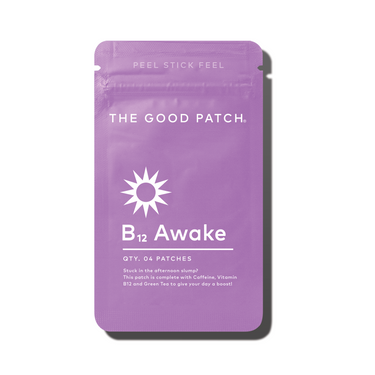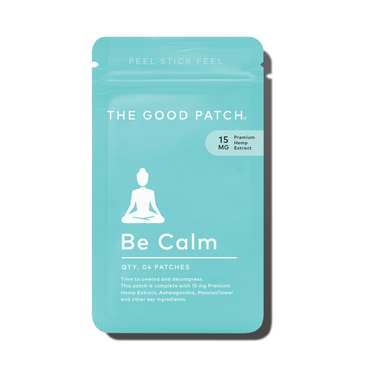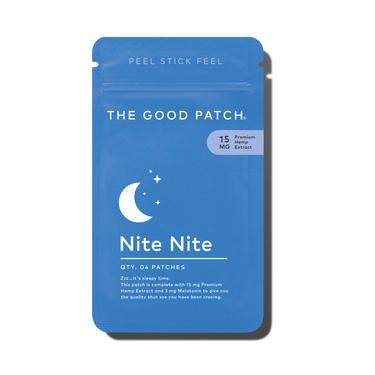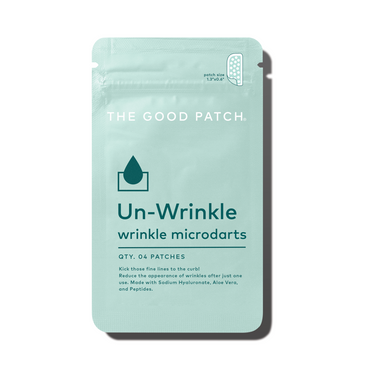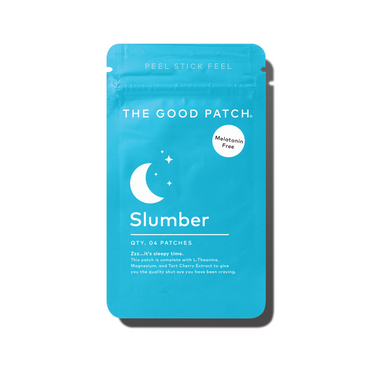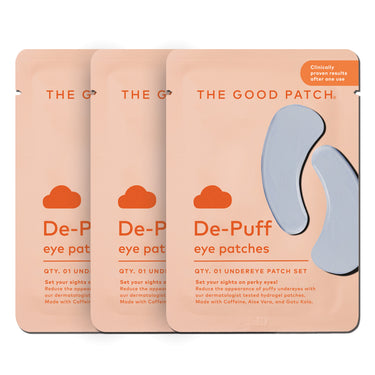As we approach the new year, many of us are looking for ways to kick it off in a way that will improve our physical and mental health. A healthy lifestyle is never out of reach! It does, however, require purposefully seeking out healthy habits in your everyday life.
While health is often solely associated with diet or fitness, it is important to remember that many factors affect overall health. For some, healthy eating habits come easily, but getting enough sleep or finding time for self-care is a struggle.
Speaking of self-care, treating yourself in the new year to The Good Patch Fan Faves Set will jumpstart your journey and prepare you to overcome any hiccups you may encounter!
Follow along as we explore healthy changes you can make with food, fitness, and mindfulness.
What Are Healthy Food Habits?
When it comes to healthy eating, the key is balance. Anyone that tells you that you must count every calorie, measure every macro, or avoid indulgences may have missed the balance piece of the equation.
Let’s look at some simple ways to balance your eating habits in the coming year.
1. Hydrate
Drinking water is an integral part of maintaining a healthy lifestyle. Our bodies rely on having enough water to perform our daily functions. Proper hydration has also been connected to better sleep quality, cognition, immune system support, and mood.
This healthy habit is at the top of the list because it, in many ways, powers the rest. Grab a reusable water bottle (an environmentally friendly option!) to carry with you throughout the day.
2. Make Your Plate Colorful
Varying food groups can help balance your diet but can be hard to remember! Instead, aim for a grocery basket full of color to ensure all the vitamins, minerals, and nutrients you need make it to your dinner plate.
3. Cook at Home
Choose whole, fresh ingredients that you can use in a variety of recipes. You’ll avoid processed foods and save money while you’re at it.
4. Meal Plan
For those with busy schedules, it can be a chore to find time to cook each day. Consider planning meals at the beginning of the week by either cooking or prepping ingredients ahead of time. It will make all the difference when you come home and the last thing you want to do is cook.
5. Not All Fats Are Bad!
Despite popular myths, many fats have a variety of health benefits. Studies suggest that fat-avoidant diets may have actually contributed to high obesity rates in the US. They may have increased refined carbs and sugars while leaving out healthy fats like nuts, seeds, and avocados.
6. Follow Your Gut
This tip has a bit of a double meaning.
First, gut health is essential for healthy digestion and preventing certain health concerns. Foods that contain high levels of probiotics or beneficial bacteria include:
- Yogurt
- Kombucha
- Sauerkraut
- Kimchi
- Miso
At the same time, listen to your cravings! Rather than denying yourself an ice cream on a hot day, or your favorite childhood snack, enjoy them in moderation. This will promote a much healthier relationship with food while simultaneously satisfying those cravings.
7. Engage in Mindful Eating
We will further dive into mindfulness later on, but mindful eating is a little-known practice with great benefit. As you dig into your colorful plate, focus all your attention on each bite, noticing how the food looks, feels, and tastes.
Instead of speeding through the meal, you will slow down. Eating slower allows us to chew thoroughly, realize we are full before we’ve over-eaten, and actually enjoy the food!
What Are Healthy Fitness Habits?
Along with eating a balanced diet and hydrating, moving our bodies can support our overall wellness goals. Here are a few ways to incorporate more movement.
8. Take a Walk
Be gentle with yourself if exercise has taken a secondary spot in your life. Start off slowly by simply getting some fresh air and strolling around your city or exploring nature.
9. Moderate to High-Intensity Exercise
Experts believe the average adult should aim for 150 minutes of moderate physical activity per week, or 75 minutes of high-intensity exercise. That may seem like a lot, but dividing the time throughout the week is relatively easy.
In addition to walking, here are some activities to consider:
- Jogging. Head to a nearby track, or take a jog around your neighborhood.
- Swimming. Gyms and public pools are great options for low-impact exercise.
- Cycling. Hop on a bicycle or stationary bike and pedal away. Everyone and their mother is cycling these days — let’s get on board!
While the previously mentioned activities are generally done solo, exercise can be quite social too. Join an adult league for access to team sports, or even go out dancing!
We all sometimes struggle to find the motivation to get active. Whether you prefer to work out in the morning or evening, our B12 Awake patch will bring you a boost any time of day.
10. Build Your Strength
Besides aerobic exercise, integrate even two days of muscle-strengthening exercise, such as weightlifting or calisthenics, into your daily routine.
11. Find a Chance To Stretch
Easy to overlook, stretching is an extremely important partner to regular exercise. It keeps our muscles strong and flexible, allowing our joints to be as mobile as possible. Some physical therapists suggest stretching every day for the best results.
Try our Relief Patch to soothe any soreness you discover while stretching those muscles.
12. Sleep, Sleep, Sleep
Perhaps the most important and unexpected healthy fitness habit is getting enough sleep. Besides drinking water, a good night’s sleep is vital to feeling energized throughout the day.
The Dream patch is designed for those who struggle to get quality ZZZs.
Studies show that sleep may prevent several health concerns. Aim for seven to nine hours each night for maximum benefit!
How Do I Practice Mindfulness?
Mindfulness can be briefly defined as an intentional awareness of yourself and your surroundings.
Relaxing can be difficult with our busy lives, so think about using our Be Calm Patch to decompress amidst the hustle and bustle. Taking a moment to acknowledge how you feel physically and mentally will let you know what areas you can improve.
13. Meditate
Though it can be intimidating initially, meditation is an excellent way to get back in touch with yourself and doesn’t have to take more than a few minutes of your day. Start small with just three minutes of meditation and, for a moment, leave all judgment and responsibilities behind.
Here are some resources if you think this new habit is for you.
14. Take a Break From Social Media
Technology and social media have become ingrained in our society and daily lives, for better or for worse. Logging out of or deleting social media apps, even just for a little while, can help you be more present in your life.
If you don’t have social media, it can still be a good idea to limit screen time.
15. Make Time for Yourself
Last but certainly not least, dedicate time each day to doing what you want to do. This will differ for everyone, so don’t hesitate to get creative. Since free time can feel like a rare commodity, think of it as an opportunity to mix hobbies with your new healthy habits.
Take that dance class you’ve been interested in, try the recipe you’ve had saved for months, or plan a relaxing weekend trip. Adopt the habits we’ve discussed while prioritizing the things that matter to you!
Conclusion
A healthy lifestyle doesn’t come without some work, but you now have tools to help you feel better than ever. By nourishing your body, incorporating movement, and practicing mindfulness, you can walk into the new year with a bright future.
Check out what we have going on at The Good Patch to support you on your wellness journey today.
Sources:
Mindfulness Definition | What Is Mindfulness | Berkeley
Eat More Color Infographic | American Heart Association
The importance of hydration | News | Harvard T.H. Chan School of Public Health
How much physical activity do adults need? | CDC
Top Foods High in Probiotics | Web MD

